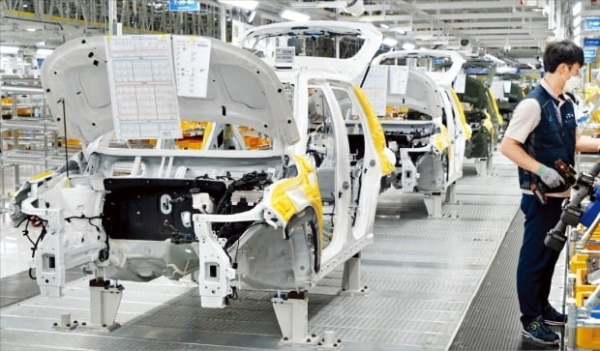The vast landscape of world auto production is a dynamic tapestry woven with threads of innovation, industry collaboration, and the pursuit of automotive excellence. From the assembly lines of established giants to the emergence of new players, the world’s automotive production serves as a testament to the intricate dance between technology, consumer demand, and environmental considerations.

Global Giants and Pioneers: A Glimpse into Automotive Powerhouses
World auto production is anchored by automotive powerhouses that have become synonymous with precision engineering and groundbreaking design. Companies like Toyota, Volkswagen, and General Motors not only shape the automotive market but also contribute significantly to the global economy. Their manufacturing facilities, spanning continents, are hubs of innovation and efficiency, producing millions of vehicles each year.
Regional Dynamics: Tailoring Production to Local Tastes and Demands
While global giants dominate the scene, regional dynamics play a pivotal role in world auto production. Manufacturers strategically tailor their production to align with local tastes, regulatory frameworks, and economic conditions. This regionalization ensures that vehicles resonate with diverse consumer preferences, from the compact and fuel-efficient models popular in urban Asia to the robust trucks favored in North America.
Shifting Landscapes: The Impact of Market Trends on Production
World auto production is not immune to the ever-shifting landscapes of market trends. The rise of electric vehicles (EVs), autonomous driving technology, and the growing emphasis on sustainability are reshaping production priorities. Established automakers and newcomers alike are recalibrating their production lines to meet the rising demand for eco-friendly and technologically advanced vehicles, signaling a transformative era in the automotive industry.
Supply Chain Symphony: Navigating the Complexities of Auto Production
The intricacies of world auto production extend beyond assembly lines to the symphony of supply chains that fuel the industry. Raw materials, components, and intricate parts sourced from around the globe converge seamlessly in manufacturing hubs. The efficiency of this supply chain dance is crucial for timely production, emphasizing the interdependence of manufacturers and suppliers in creating the final automotive masterpiece.
The Electric Revolution: Rethinking Auto Production for a Sustainable Future
As the world grapples with environmental concerns, the electric revolution is ushering in a paradigm shift in auto production. Manufacturers are investing heavily in electric vehicle platforms, necessitating changes in production processes and reimagining the traditional assembly line. The shift towards EVs not only addresses environmental concerns but also transforms the dynamics of world auto production.
Emerging Players: A Glimpse into the Future Landscape
World auto production is witnessing the emergence of new players, particularly in the electric vehicle space. Companies like Tesla have disrupted the traditional automotive landscape, introducing innovative manufacturing approaches and challenging established norms. The influence of these disruptors extends beyond the production floor, permeating the entire automotive ecosystem.
Challenges in the Production Arena: From Chip Shortages to Global Events
The landscape of world auto production is not without its challenges. The recent global chip shortage highlighted the vulnerability of automotive supply chains, disrupting production schedules for major manufacturers. Additionally, global events such as the COVID-19 pandemic have underscored the importance of resilience and adaptability in the face of unforeseen disruptions.
Customization Trends: Personalizing the Production Experience
Consumer preferences for personalized vehicles are reshaping the world of auto production. Manufacturers are embracing customization trends, offering consumers the ability to tailor various aspects of their vehicles, from color options to advanced technological features. This shift towards customization reflects a consumer-driven approach that values individuality in the automotive landscape.
Digital Twins and Smart Factories: Revolutionizing Production Efficiency
The integration of digital twins and smart factory concepts is revolutionizing world auto production. Digital twins, virtual replicas of physical manufacturing systems, allow for precise simulations and optimizations, enhancing efficiency and reducing waste. Smart factories leverage technologies like the Internet of Things (IoT) to create interconnected, data-driven production environments that respond dynamically to demand fluctuations and production challenges.
Labor Dynamics: Balancing Automation and Human Expertise
The increasing integration of automation in world auto production raises questions about the role of human labor. While automation enhances efficiency and precision, human expertise remains indispensable in areas requiring creativity, problem-solving, and adaptability. Striking the right balance between automation and human involvement is crucial for sustaining a resilient and innovative production landscape.
The Future Horizon: Trends Shaping Tomorrow’s Auto Production
As we gaze into the future of world auto production, several trends shape the horizon. The pursuit of sustainable and circular manufacturing practices, the integration of artificial intelligence in production processes, and the exploration of novel materials are all on the agenda. The collaborative efforts of manufacturers, coupled with technological advancements, are poised to redefine the very essence of auto production in the coming years.
Conclusion: Driving Towards an Evolving Horizon
In conclusion, world auto production is a captivating journey that mirrors the pulse of our global society. From the titans of traditional manufacturing to the disruptors embracing the electric revolution, the automotive industry navigates a landscape defined by innovation, adaptability, and a commitment to shaping the future of mobility. As the wheels of production continue to turn, the world anticipates the next chapter in the automotive narrative—one marked by sustainability, technological marvels, and a harmonious balance between tradition and transformation.
